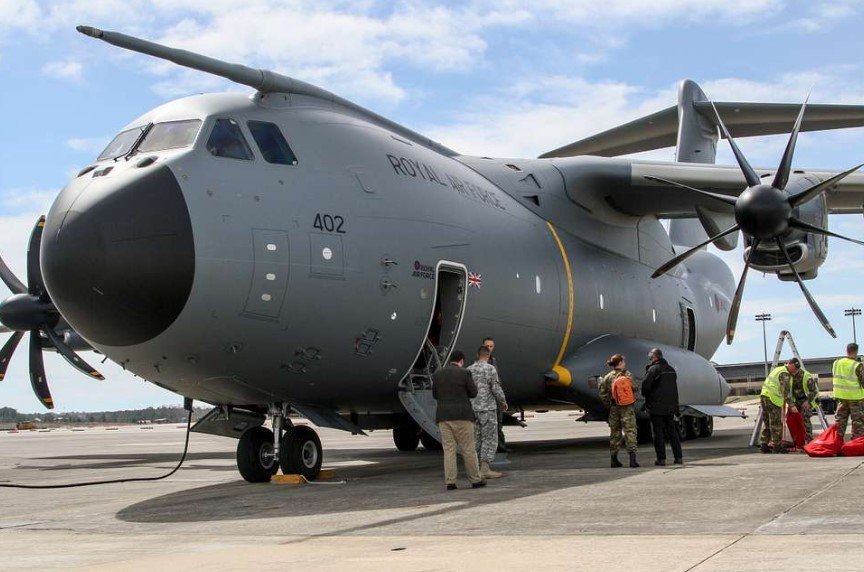RAF specialists move stealth jet into hangar as security tightens around Indian airbase
The British Royal Air Force has quietly flown a group of engineers and defense specialists into southern India to assess damage to a stealth F-35 fighter jet, after the aircraft was unexpectedly grounded in Kerala last month.
Sources say a 14-member UK team arrived aboard a massive A400M Atlas transport plane at Kannur International Airport, before heading to the Indian Air Force’s protected area where the advanced aircraft has been stationed since the incident.
A fighter that wasn’t meant to stay
The F-35 — one of the world’s most expensive and sophisticated fighter jets — wasn’t supposed to spend this long on Indian soil.
Initial indications are that the jet was en route back to the UK from a multinational exercise in the Pacific when a technical snag forced an emergency diversion. What should’ve been a short ground check has stretched into a multi-week stay.
Officials at the airport, speaking on condition of anonymity, say the aircraft has now been moved to a secured hangar for a closer inspection. The move came after days of satellite surveillance, CCTV upgrades, and increased patrols near the airstrip.
One official quipped, “It’s not every day you get to guard a £100 million fighter jet.”

Who arrived, and what they brought with them
The team that touched down from the UK isn’t just any repair crew. It reportedly includes a mix of Royal Air Force ground engineers, BAE Systems specialists, and a representative from Lockheed Martin, which co-produces the jet.
There were quiet arrangements made behind the scenes for tools, diagnostic kits, and even F-35-specific hardware to be flown in.
Here’s what local airport sources confirmed:
-
The A400M cargo bay held specialized hydraulic rigs and wing-stabilizing jigs
-
The personnel included avionics experts and stealth skin repair technicians
-
Local security was briefed 24 hours before the team’s arrival
-
No images or videos of the jet’s movement were allowed to be taken
The operation had the feel of a military-grade logistics drill — except it was real.
What went wrong mid-air?
So far, no one’s gone on record to confirm what forced the F-35 to land in India. But retired Air Marshal Vinod Patnaik, speaking to Deccan Herald, speculated it could’ve been “a sensor warning or landing gear irregularity,” something serious enough to not risk a long-haul flight.
The F-35, built with stealth and data fusion capabilities, runs on a massive software brain. A glitch in even one of its sensors can trigger an automatic abort sequence.
A senior Indian Air Force source said they’ve been asked “not to touch or photograph the jet.”
Which, in plain speak, means it’s still technically a sovereign piece of British defense hardware parked in a foreign land — and being treated as such.
A matter of optics and diplomacy
There’s also a layer of quiet diplomacy at play here.
India, not a part of the F-35 program, isn’t allowed access to any of the fighter’s technology. Yet here it is, sitting on Indian soil, guarded by Indian troops, with British engineers swarming around it.
For a government navigating its ties with both Western defense giants and a growing domestic military industry, the situation is delicate.
“This is a textbook case of operational secrecy meeting international courtesy,” a Delhi-based defense analyst said.
The Ministry of External Affairs has so far issued no formal statement. Neither has the UK High Commission in New Delhi.
Jet in Kerala: An unusual stopover
The town of Mattannur, where Kannur Airport is located, isn’t used to this kind of attention. But locals say they’ve noticed tighter restrictions, even if they don’t fully know why.
“There are more uniforms than usual,” said a baggage handler who requested anonymity. “And they’re very strict about who gets near the edge of the runway.”
Below is a look at key developments since the jet landed:
| Date | Event |
|---|---|
| June 28 | F-35 makes unplanned landing at Kannur airport |
| July 1 | Indian Air Force confirms it is guarding the aircraft |
| July 5 | RAF’s A400M Atlas arrives with UK experts and equipment |
| July 6 | Aircraft moved from tarmac to secure hangar |
| July 7 | British technicians begin damage assessment |
And for all the mystery, one thing is certain: the aircraft’s not flying out anytime this week.
What comes next?
If the damage is minor — say a sensor fault or software hiccup — the plane might be cleared for takeoff in a matter of days. But if structural repairs are needed, the UK may need to fly in even more personnel.
There are also permissions to consider. India will have to approve the aircraft’s departure time and route. Fueling and safety protocols have to be coordinated with Indian Air Force controllers.
And then there’s the weather. The monsoon has hit Kerala, with intense rains lashing the region over the weekend.
One air traffic controller sighed, “We’re hoping it’s just a simple repair. Otherwise, that jet might be with us for a while.”
